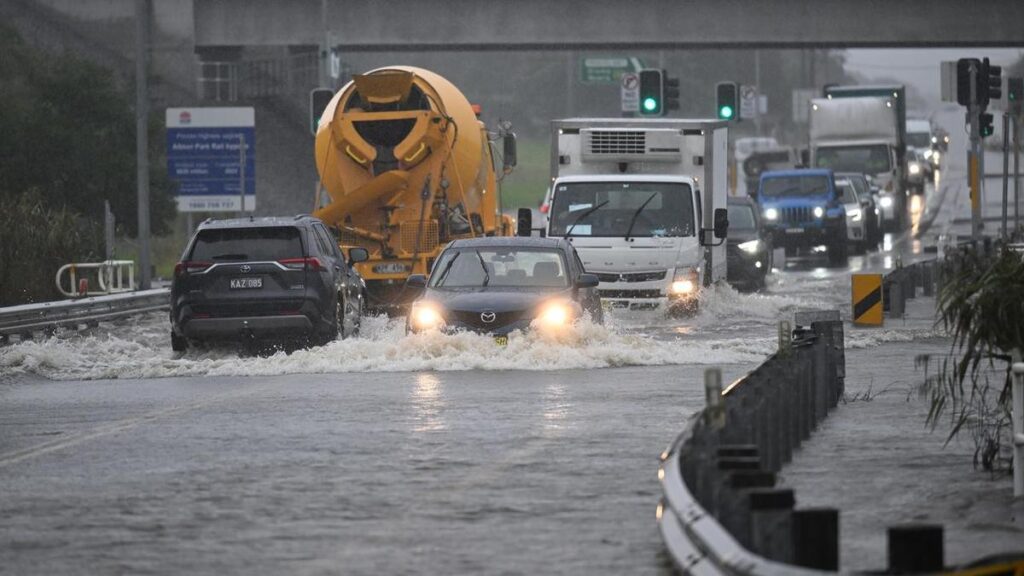More than six million people are being warned of delays, blocked roads and flash flooding as Sydney and surrounds are impacted by heavy rain.
Police pointed to two road deaths overnight as intense rain moved from the flooded NSW mid-north coast to the state capital.
The Nepean Dam is spilling while Australia’s largest urban water supply, the Warragamba Dam, may spill depending on where rain falls on Friday, the SES said.
Train services were also thrown into disarray across the central region as floodwaters halted services in the city loop, Blue Mountains, Mittagong, Cockle Creek and Sandbridge.
More than 200mm of rain fell in Richmond, about 90mm in Camden, more than 50mm in Katoomba and at least 75mm at Sydney airport in the 24 hours to 9am on Friday.
Parts of the Illawarra copped more than 200mm, including Clover Hill, causing localised flooding on the coast.
Sydney and Blue Mountains are expecting a further dumping of up to 100mm over the next 24 hours.
“Our message is not only to the drivers in the rural areas, but drivers in metropolitan Sydney as well, please drive to the conditions,” acting police commissioner Peter Thurtell said on Friday.
An elderly man was killed after a 36-year-old driver struck him in western Sydney on Thursday evening.
Meanwhile, two trucks collided in the city’s southwest on Friday morning, killing a passenger.
Police did not draw direct links between the crashes and wet weather but urged caution.
“Accidents increase particularly during night-time hours in wet weather,” Mr Thurtell said.
According to the SES, flash flooding has already impacted some areas on Sydney’s fringes.
A watch and act warning is in place for Gronos Point in north-west Sydney as the Hawkesbury River rises.
Advice warnings have been issued for areas in Liverpool, Tempe, Richmond, Windsor, Colo and Milperra.
The Warragamba Dam is at 97 per cent and could spill on Friday or Saturday.
“Water NSW are not anticipating a spill … but depending on where that rain falls, there is still a potential,” NSW SES deputy commissioner Damien Johnston said.
Authorities are also keeping a close eye on the Hawkesbury-Nepean and Warragamba rivers.
The last time they overflowed was in 2022, when around 85,000 people were displaced.
The current trough which has left 50,000 people isolated across the mid-north coast and Hunter regions, is expected to move south of Sydney on Friday afternoon.



